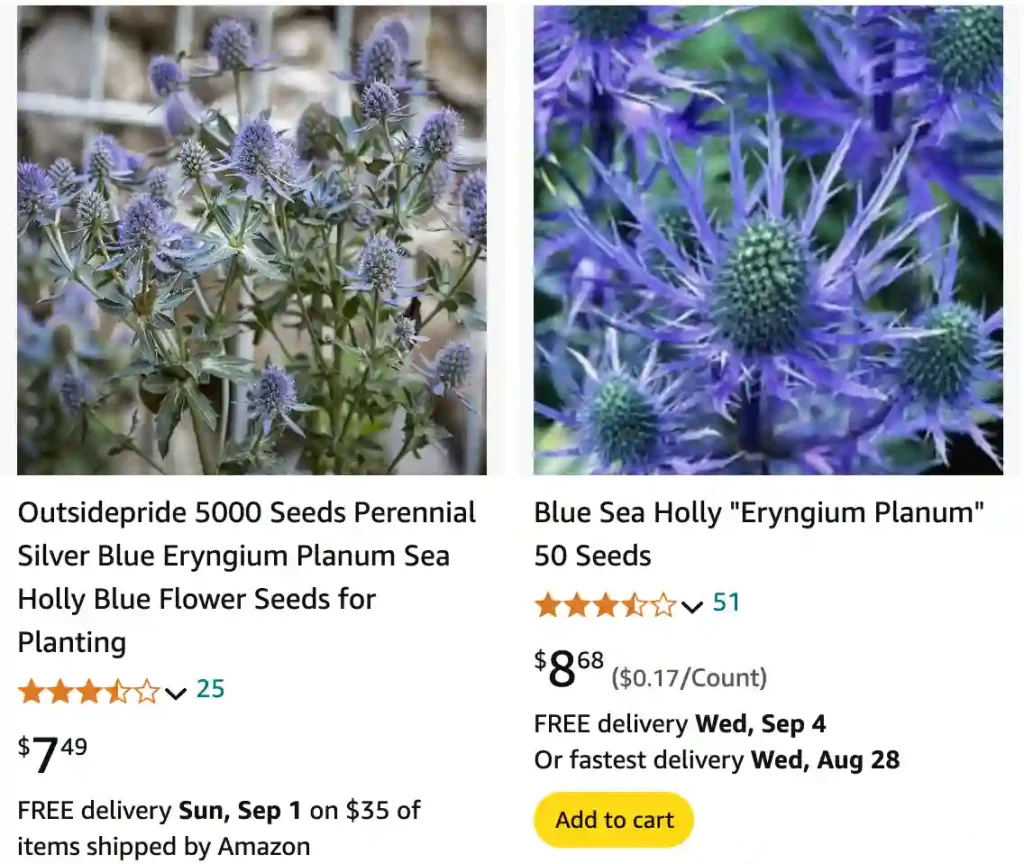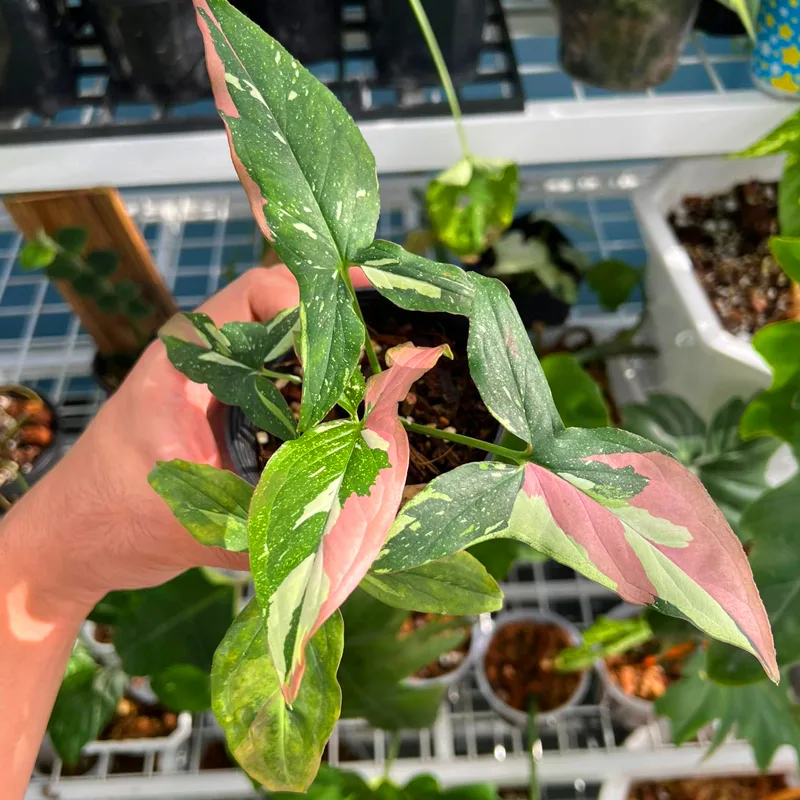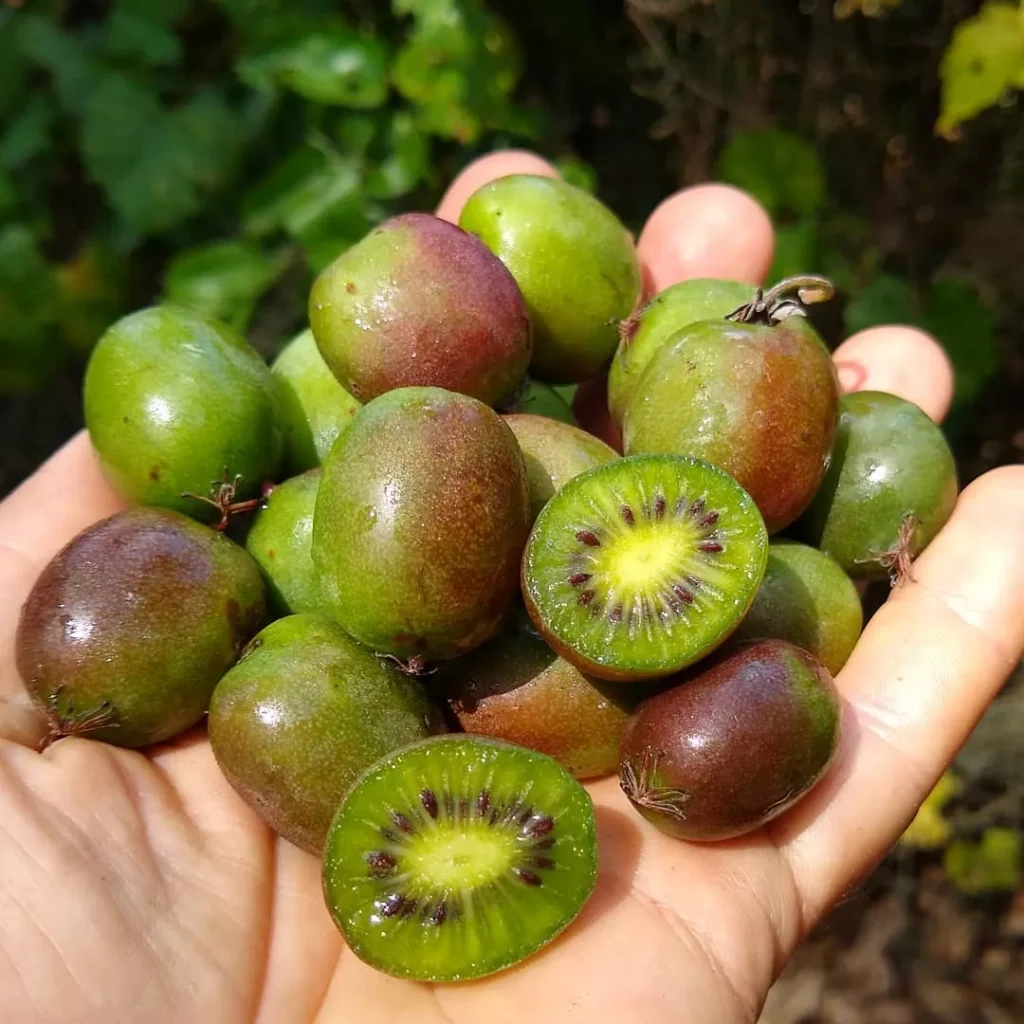
FAQs About Sea Holly
I’ve been fascinated by Sea Holly for a long time, and over the years, I’ve found it to be a unique and beautiful addition to any garden. If you’re considering adding this stunning plant to your garden, you might have some questions about it. I’ll cover some of the most frequently asked questions about Sea Holly, also known by its scientific name Eryngium.
What is Sea Holly?
Sea Holly is a perennial plant known for its striking blue or silver thistle-like flowers and spiny leaves. These plants are native to Europe and have become popular in gardens for their unique appearance and drought tolerance. The blooms are not only beautiful but also attract bees, butterflies, and other pollinators, making Sea Holly a great choice for a wildlife-friendly garden.
Does Sea Holly Die Back in Winter?
Yes, Sea Holly typically dies back in winter. As a perennial, it may lose its leaves and stems, going dormant when the cold weather arrives. However, come spring, it will sprout new growth from the base. It’s a good idea to cut back the dead stems in late winter or early spring to make way for the new growth.
Where to Buy Sea Holly Plants?
You can find Sea Holly plants at most garden centers and nurseries, especially those that specialize in perennials. Online plant retailers also offer a wide selection of Sea Holly varieties. When buying online, make sure to purchase from reputable sellers to ensure the plants are healthy and true to type.
Does Sea Holly Spread?
Sea Holly can spread, but it’s not invasive. The plant can form clumps over time, gradually expanding in width. Some varieties may self-seed, leading to new plants growing around the garden. If you don’t want it to spread, you can deadhead the flowers before they set seed.
Can You Dry Sea Holly?
Yes, you can dry Sea Holly. Its spiky flowers and stems make excellent additions to dried flower arrangements. To dry Sea Holly, cut the stems when the flowers are fully open and hang them upside down in a cool, dark, and dry place. This method helps retain the color and shape of the flowers.
Do Deer Eat Sea Holly?
Sea Holly is generally deer-resistant due to its spiny leaves and stems. Deer tend to avoid plants with tough, spiky foliage, making Sea Holly a good choice for gardens where deer browsing is a problem.
Does Sea Holly Bloom the First Year?
Sea Holly usually blooms in its second year. When grown from seed, the first year is typically spent developing strong roots and foliage. However, if you purchase a well-established plant from a nursery, it might bloom in the first year after planting.
Does Sea Holly Come Back Every Year?
Yes, Sea Holly is a perennial, so it comes back every year. After dying back in winter, it re-emerges in spring. With proper care, it will continue to thrive and produce beautiful blooms each year.
Does Sea Holly Need Full Sun?
Sea Holly thrives in full sun. It requires at least 6 hours of direct sunlight daily to produce its best blooms. It can tolerate some partial shade, but too much shade can lead to fewer flowers and weaker growth.
Does Sea Holly Self-Seed?
Some varieties of Sea Holly can self-seed, meaning they will drop seeds after flowering, leading to new plants the following year. If you want to prevent self-seeding, you can deadhead the flowers before they set seed.
How Tall Does Sea Holly Get?
Sea Holly varies in height depending on the variety. Most types grow between 1 to 4 feet tall. The taller varieties are perfect for adding height to the back of a border, while shorter varieties can be used in the front.
How to Collect Sea Holly Seeds?
To collect Sea Holly seeds, allow the flowers to fade and dry on the plant. Once the seed heads are dry and brown, cut them off and place them in a paper bag. Shake the bag to release the seeds, and then store them in a cool, dry place until you’re ready to plant.
How to Grow Blue Sea Holly?
Growing Blue Sea Holly is relatively easy. Start with well-draining soil and a location that gets full sun. Plant the seeds or seedlings in spring, spacing them about 18 inches apart. Water them regularly until they are established, but avoid overwatering. Once established, Sea Holly is drought-tolerant and requires little maintenance.
How to Propagate Sea Holly?
Sea Holly can be propagated by seed, division, or root cuttings. The easiest method is to divide mature plants in spring or autumn. Simply dig up the plant, separate it into smaller sections with roots attached, and replant them. Root cuttings can also be taken in late autumn or winter.
Is Sea Holly Poisonous?
Sea Holly is not considered poisonous to humans or pets. However, like many plants, it’s a good idea to keep it out of reach of pets and children who might be tempted to chew on its spiky leaves or flowers.
Sea Holly vs. Globe Thistle
Sea Holly and Globe Thistle are often confused due to their similar appearance. Both have spiky, ball-shaped flowers, but Sea Holly typically has blue or silver blooms and more intricate, jagged leaves. Globe Thistle, on the other hand, has rounder, more globe-like flowers and simpler leaves. Both are excellent for attracting pollinators and add unique texture to gardens.
How to Care for Sea Holly?
Caring for Sea Holly is straightforward. Ensure it’s planted in well-draining soil and gets plenty of sunlight. Water it sparingly once established, as it prefers drier conditions. Prune back the dead foliage in late winter or early spring, and apply a light layer of mulch to protect the roots during winter.
What to Plant with Sea Holly?
Sea Holly pairs well with other sun-loving, drought-tolerant plants. Consider planting it alongside Lavender, Russian Sage, or ornamental grasses for a stunning display. Its blue flowers contrast beautifully with yellow or orange blooms like those of Black-eyed Susans or Coreopsis.
By understanding these aspects of Sea Holly, you can enjoy its unique beauty and easy care in your garden. Whether you’re a seasoned gardener or a beginner, Sea Holly is a wonderful choice to add texture, color, and interest to your outdoor space.




